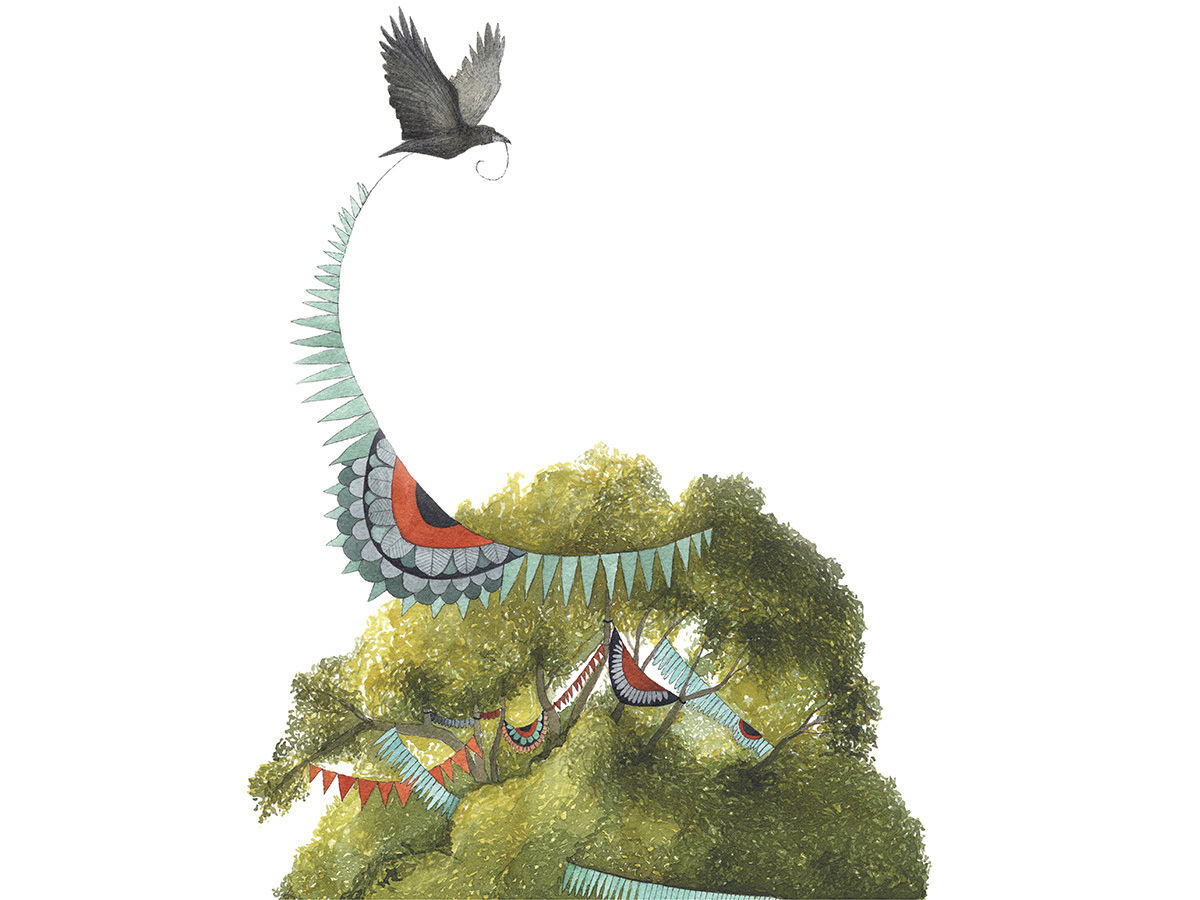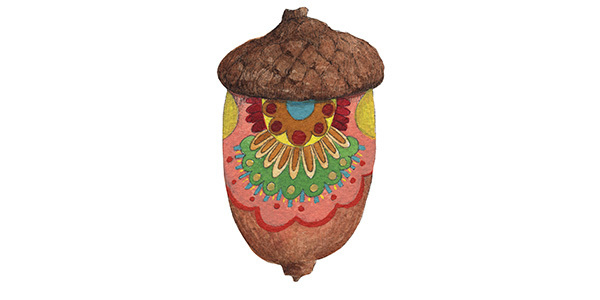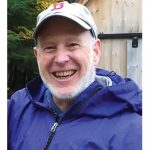Rewiring My Brain
“So, what are you doing now?” my well-meaning friends would ask after I had quit my job with no apparent employment or other occupation in sight. The only honest answer I could give was to say, “I’m rewiring my brain.”
Perhaps a few understood, but to most it must have sounded like Steve was going off the deep end. Which, I guess, I was. I was 52 years old and had just resigned from running the nonprofit I had founded a decade -earlier. Our son was in college, our daughter a senior in high school, applying to college. My wife was working for the same little organization I had just left. We lived simply, but still. . . . It was not, to say the least, a sensible time to quit working.

Quilted Comrades -Jess Polanshek
It didn’t make any sense, but I knew I had to do it. I’ve always been an outdoors person and conservationist. Living mostly in rural New Hampshire, I’ve spent countless days and weeks hiking, running, skiing, and paddling the woods, mountains, and rivers of northern New England (and other places). When I wasn’t doing that, I was organizing people to protect and restore these places, building nonprofit -organizations to care for these lands I love, and for their people. But now, supposedly at the peak of my career, I had hit the wall.
The collision had begun two years earlier as a literal, physical careening into a wall. Walking on a trailless mountain ridge one moonless night, I had collided with an unseen wall of rock in the pitch black. Stymied in following the way of my own ambition—to walk around the entire mountain that night—I had been forced to turn around, to find another way. To surrender to unmoving rock and darkness.
Physically, I was unhurt, but I returned from that vision quest knowing something profound had shifted in my life. But I didn’t understand what.
Over the next two years, the physical wall morphed into an emotional and psychological wall. My mother died suddenly, prey to a swift-moving cancer. I fell into depression. The energy, strength, and vision that had fueled my work for 25 years was withdrawn. The muse vanished.
The first wall had been palpable—hard, cold stone on the side of a mountain, even as the desert stars flamed brilliantly above. Face to face with that physical reality, the act of turning around took but two minutes. The second wall, though no less real, was utterly invisible. This time, it took me two years to understand and give in. It was not pretty. It stank.
Looking back now, with 10 years of perspective, I more clearly see the pattern. Beginning with my journey around the mountain, my old self was, piece by piece, taken apart. The external support structures of ambition, competence, career, success, income—the usual worldly trappings of validation—were, one by one, removed. I had become incompetent in the kind of work I had always done supremely well. I had no sense of purpose. My career was gone, I didn’t have a job, and I wasn’t earning a penny.
My journal recalls the words of one sleepless night during which I was “resting in the crucible of anxiety”—a bystander while the extraneous impurities of my old self were burned away. It hurt.
And then, waiting in the darkness. If the first phase of rewiring was stripping away and dismantling, the second phase was being in the tomb, where the old has been destroyed and the new has not yet been made. In the still, dark silence of not-yet. Blind. Waiting.

Asleep in the Quilted Forest - Jess Polanshek
The first stirrings of new life appeared on the first anniversary of my mother’s death. Five months later, a quiet voice spoke in no uncertain terms: “Priest. You are to be a priest.” No matter that I had never been to church in my life. In this reality, anything is possible.
Within a few weeks, I had told my board of directors that it was time for me to leave (though I wasn’t brave enough to tell them the full reason). I cleared the decks, making space for whatever was beginning to emerge. When I finally quit, the rightness of the decision was obvious. Clarity about next steps began to appear, first as tiny drips of refreshing water, then as a tumbling waterfall of overwhelming power.
By then, I understood enough to tell friends what I was doing now. No, no job; I’m just rewiring my brain. Up till then, actually, it had been dewiring. Now, I was beginning again. Being born anew, even, with the same gifts, skills, inclinations, passions, dislikes, and foibles. Still committed to caring for the Earth, but oriented toward a greater Reality.
Five months later, a quiet voice spoke in no uncertain terms: “Priest. You are to be a priest.”
In round numbers, it has taken me a decade to get from there to here. To be re-formed as a new Stephen. To learn a new trade, a new practice, a new language. To be ordained as a priest.
What does it look like, I wondered as I went off to seminary, to care for the land as a priest and as a follower of Christ, rather than caring for the land as a secular activist? Is there room in this ancient, beautiful, and sometimes hidebound tradition for people who encounter God in the wilderness, upon the mountain, in the forest?
On that front, at least, I learned I had little to fear. The Hebrew Bible (the Old Testament, to Christians) is filled with stories of people who encounter God in the wild places. When I finally read the Gospel accounts of Jesus’ life, I found a nugget of gold: “. . . Then Jesus went alone up the mountain to pray.” (Matthew 14:23)
Those words, slipped between more-dramatic stories, opened up the world. Whether Jesus went into the temple to pray, the book doesn’t bother to say. Persistently, though, the Gospel writers tell us that he went into the wilderness, to a lonely place, up the mountain, by the lake. It’s clear as day and night that this is where he encountered God. Directly. Alone.
If it’s good enough for Jesus, surely it’s good enough for me.
One day, walking in the woods, that quiet voice returned. “Start a church,” it said. “You mean, like a woods church?” I asked. A church for people who, like me, are desperately, even painfully, seeking God but who most readily find that Truth outdoors, in and through the natural world? And yet who also crave the ancient wisdom of a faith that revolves around the mysteries of death, waiting in the darkness, and new life? I could do that.

Quilted Treetop - Jess Polanshek
My job, as priest, is to hold a sacred space where people can see what is already there.
Now, four years later, Church of the Woods meets—in the woods, of course—every Sunday. Along with reading from the Bible and other sacred texts, singing, praying, and celebrating communion, we spend 20 minutes in silence, alone. We walk and sit in the healing presence of God as encountered in and through the trees, the birds, the wind, the mosquitos, the frogs, the mushrooms—all part of the congregation—and as found in the liturgy, in the Bible, in the prayers and the songs, and in the faces and voices of the people who come to the woods.
My job, as priest, is to hold a sacred space where people can see what is already there. In making these humble woods a church, we reclaim the ancient human experience of land as sacred, as a bearer of divine presence. Our material, secular, consumer world hardly even knows the word sacred. Is it any wonder we are so lost, or that we wreck the glorious, mysterious, beautiful world of nature around us?
When we see the land as sacred, we care for it. When we see ourselves in loving relationship with trees and creatures and water, we care for those. When we see other people as children of God, we care for them. When we experience ourselves as God’s beloved, we are healed.
It’s as though I now glimpse another dimension of reality—a dimension that has always been there but that I most often didn’t see, hear, feel, or experience. My senses now are a bit more acute, open, receptive. I see more clearly—and I have language to speak about what I find. My understanding of my own calling is deeper. We live in a sacred world, and we are called to respond accordingly.

The Acorn - Jess Polanshek
10 Practices
Rewiring a brain is not a short process. I cannot see inside my own skull, of course, but I am convinced there is both physical and spiritual reality to this—that spiritual rewiring is carried by material rewiring. I can still feel it, continuing to work in the still darkness.
Looking back, here are 10 practices I embraced that contributed to the rewiring of my Self.
1. I listened. To what was moving within myself, and to the words of family and friends. Like the colleague who told me one day, “Steve, you do know it’s time for you to leave your work, don’t you?” Well, no, I hadn’t known. When the time came, I paid attention.
2. I trusted. I had help, such as on the lovely June day when I was driving to work and was moved to play Handel’s Messiah on the stereo. When I heard the chorus “He Trusted in God,” I burst into tears. Go figure. Trust.
3. I learned and embraced contemplative practices. For me, being in nature is always the starting point, so I kept going with that. I added a sitting meditation each morning until, over time, initial forays became a steady discipline.
4. I spent time alone, still, and silent. There is no substitute.
5. I waited. “Waiting in patient urgency,” as I wrote in my journal one day. Just waiting.
6. I asked others to help me. People who’d been on these paths before, from a variety of backgrounds and traditions. I followed some of what they offered, and stuck with what worked for me.
7. I kept a journal, which I usually didn’t do. Still don’t. But I did. Thank God.
8. I sang and I danced. Joy breaking in!
9. I began reading religious and spiritual texts. Devouring might be a better word.
10. I said “Yes.” I entered and embraced an organized religious tradition, with all its foibles, because I need community, ritual, and ancient wisdom. This is too big to do alone.


